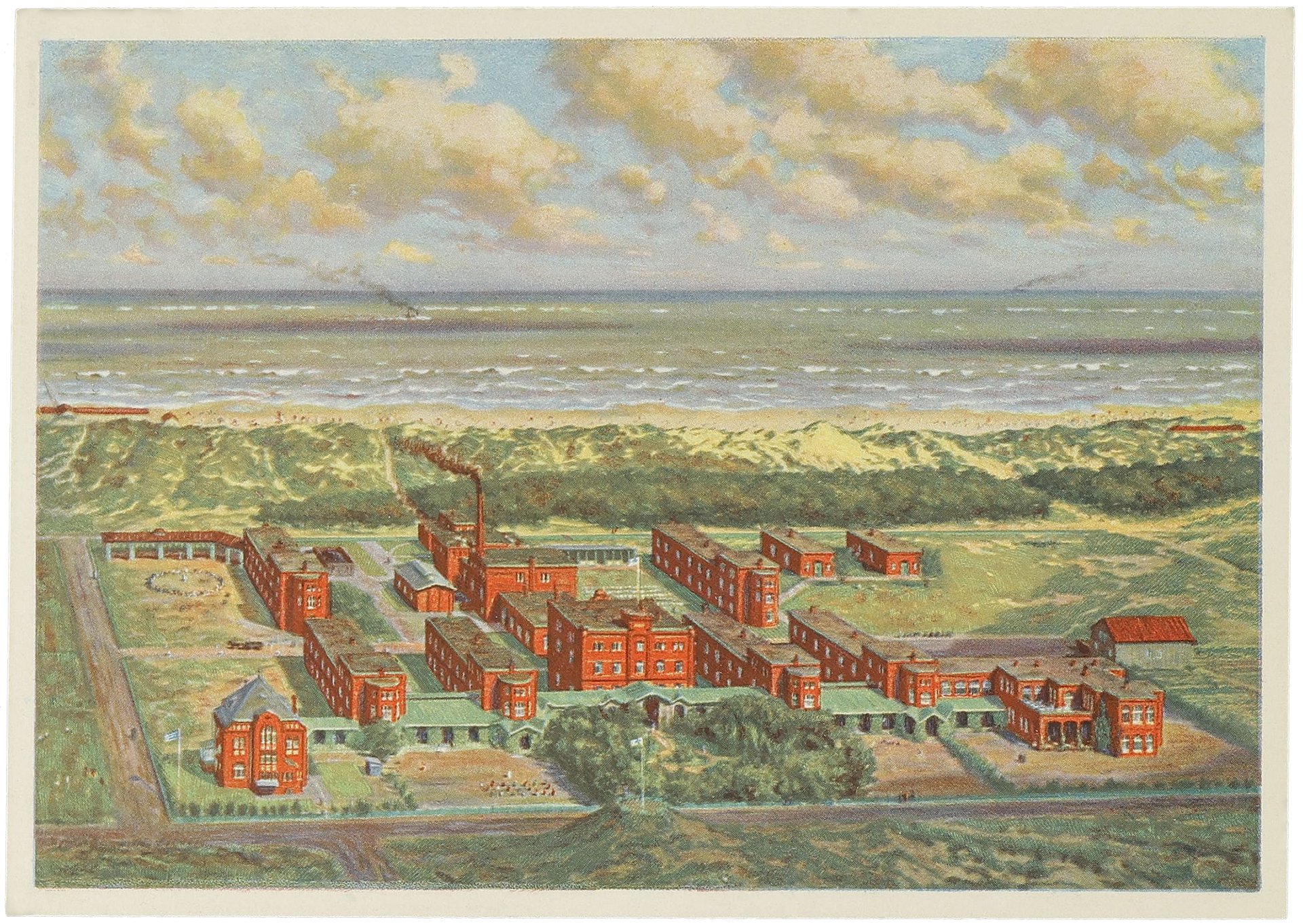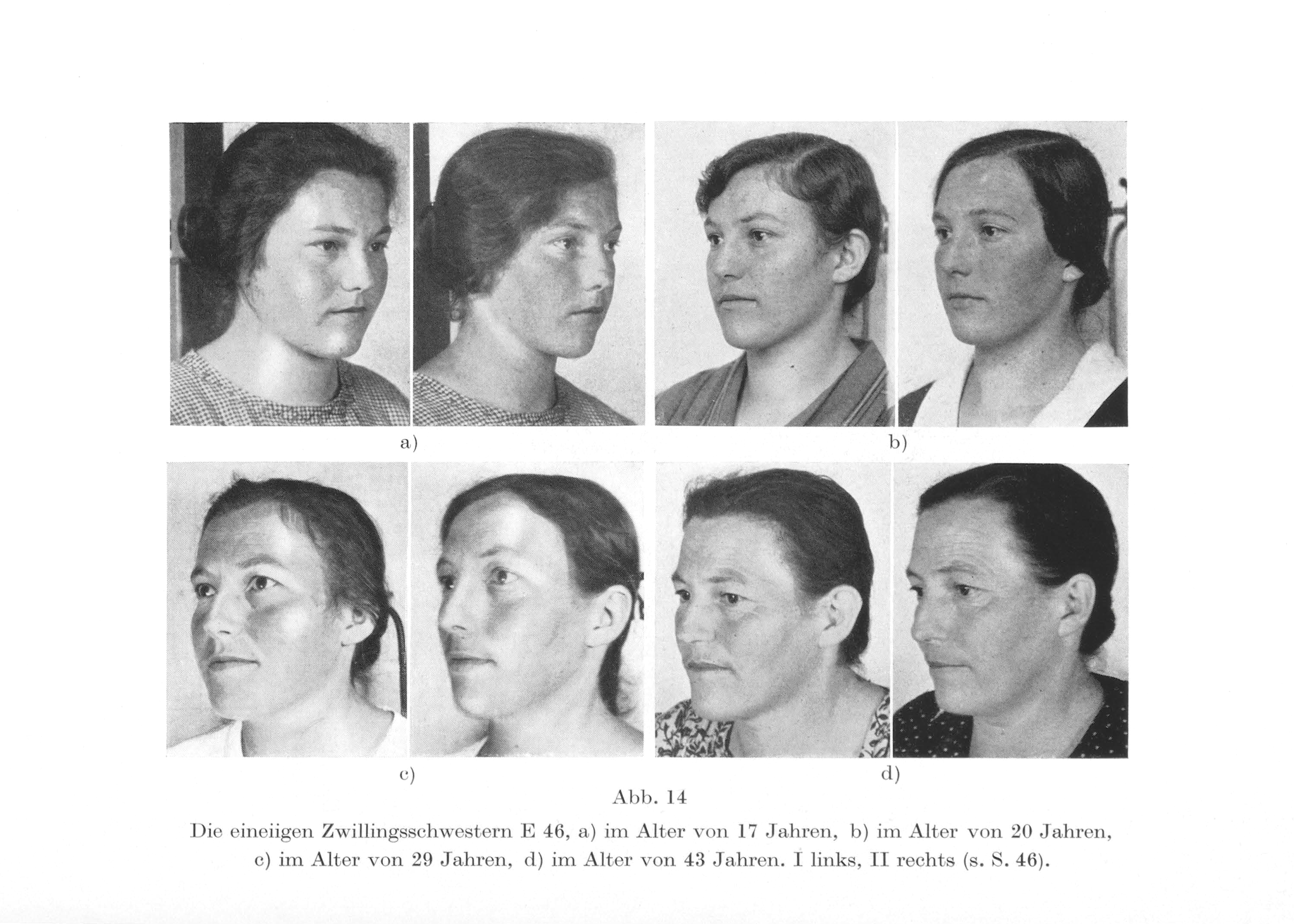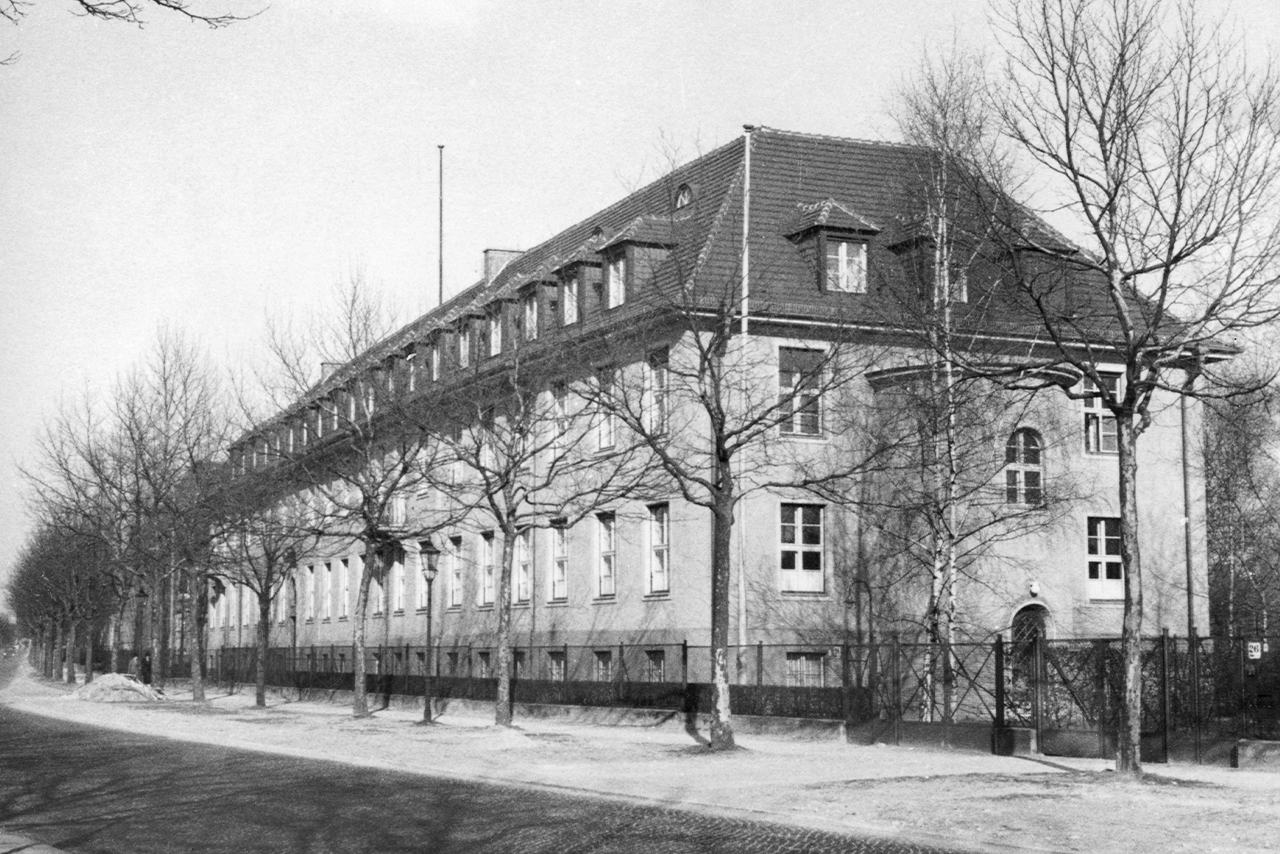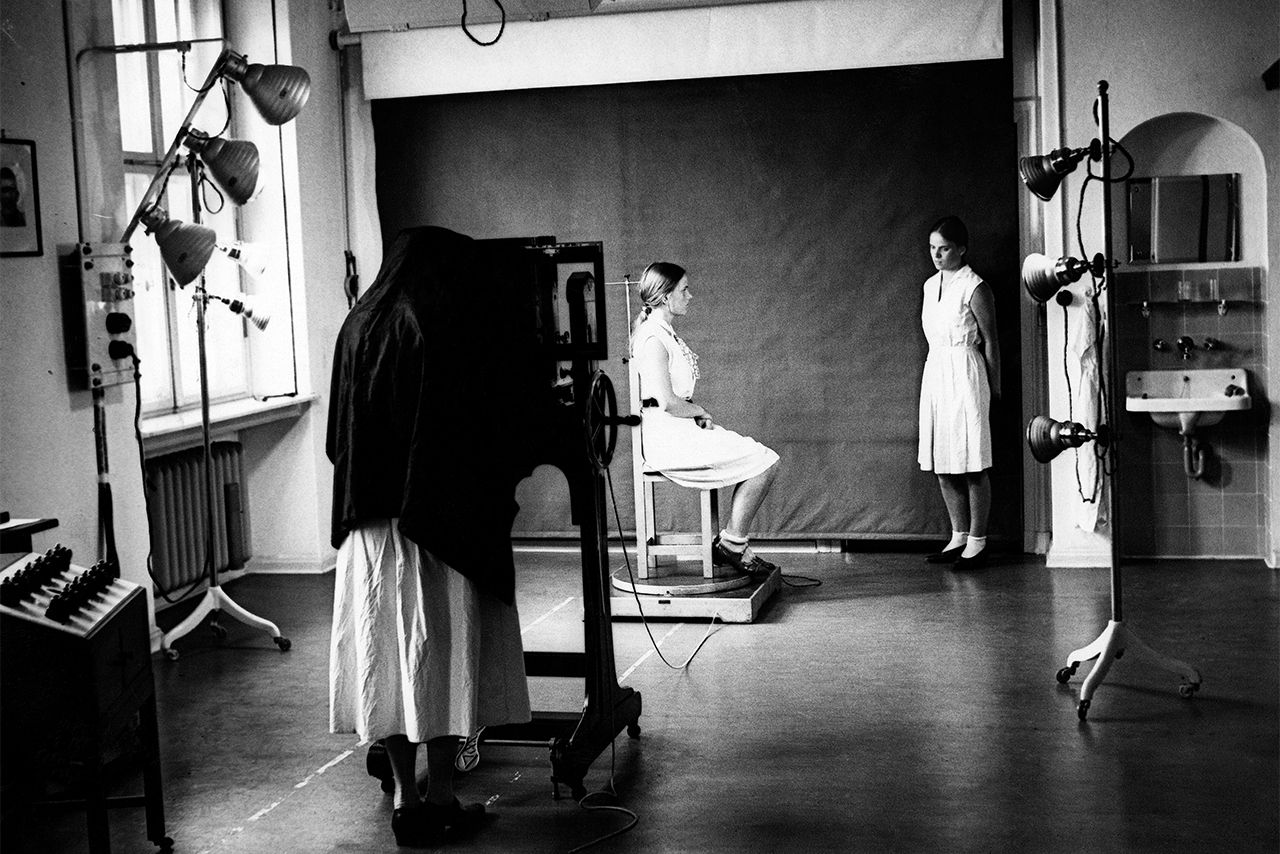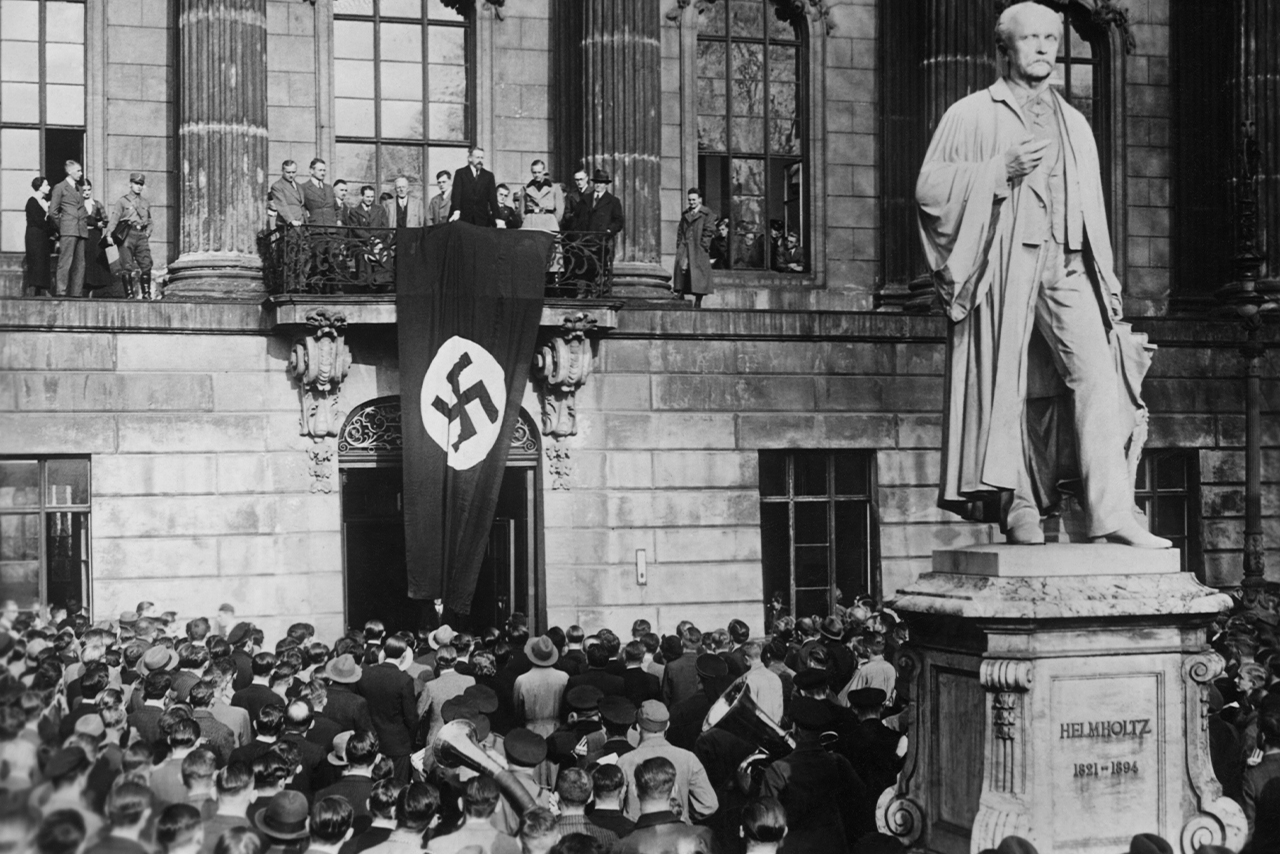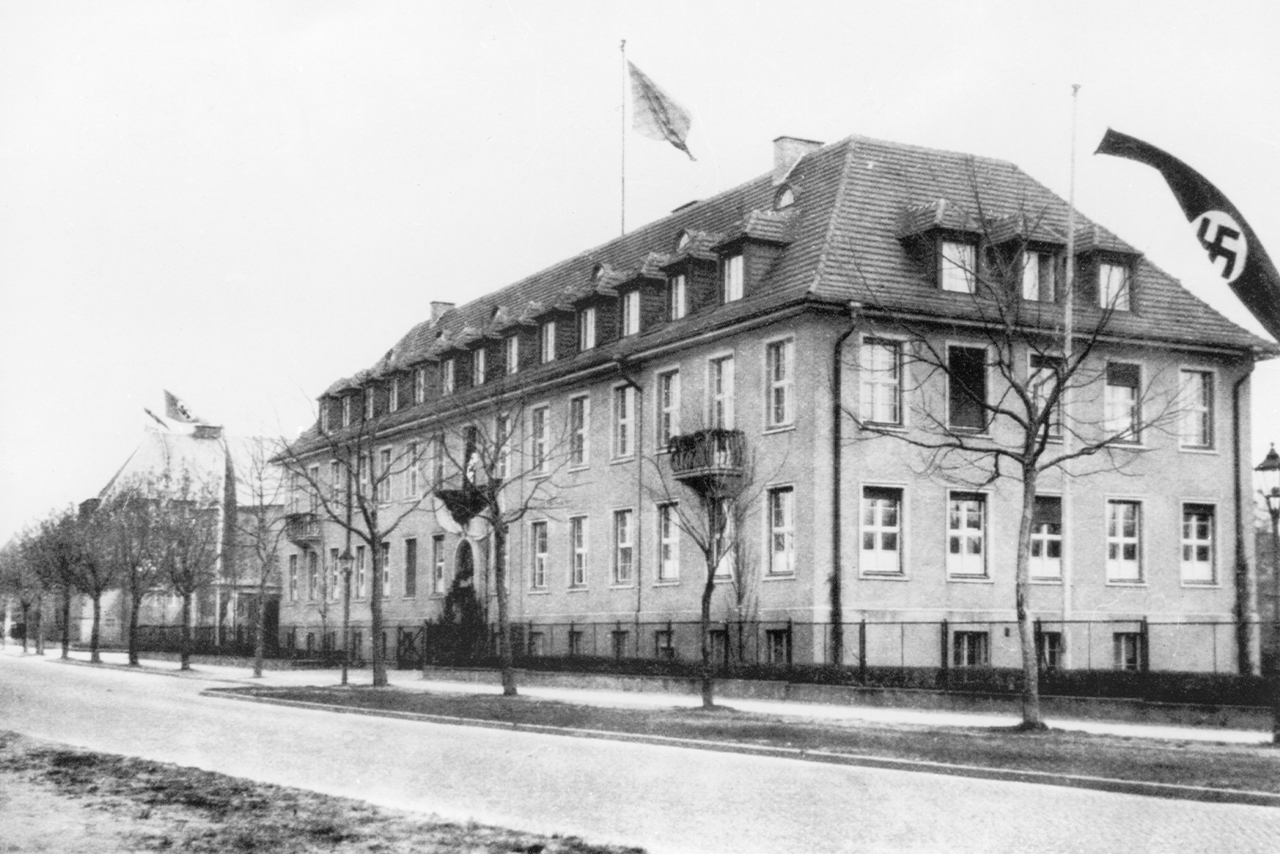MEASURING
TWINS
―
QUANTIFYING
LIFE
A designated “examination room for twins” used to be in the basement of the building at Ihnestraße 22. The Institute was considered an international leader in the study of twins. Researchers sought to answer the key question: is it genes or environments that determine appearance, behaviour, and diseases in humans?
The researchers understood monozygotic twins to be genetically identical. They therefore attributed differences between them to environmental influences, while similarities were understood to be due to genes. Researchers documented the differences between monozygotic twins numerically and compared them with the differences between dizygotic twins. Their aim was to mathematically determine the heritability of a trait.

At the Institute, sets of twins were examined, measured, and photographed. Photos like this one were meticulously staged. They presented the Institute as a modern institution that conducted research on humans under laboratory conditions.

Otmar von Verschuer showcases the Institute’s “twin files”. At the beginning of the 1930s, medical data was collected on the more than 700 twins examined at the Institute. Large amounts of data were important for the “twin method” because the influences of environment and heredity were to be measured statistically. After 1945, Verschuer continued expanding the files at the University of Münster.
On the island of Norderney, off the North Sea coast of Germany, Kurt Gottschaldt, head of the Department of Hereditary Psychology, organised “twin camps” in 1936 and 1937. Other camps took place near Berlin. A total of over 300 children spent their summer holidays there. Researchers wrote “behaviour and mood reports” on each child twice a day. Throughout his life, Gottschaldt worked on collating this disparate data into a clear format.

Otmar von Verschuer
The young scientist Otmar von Verschuer (1896–1969) was appointed Head of the Department of Human Heredity by Founding Director Eugen Fischer. He established the Institute as a centre for the study of twins. In 1942, Verschuer succeeded Fischer as its director.
Verschuer had close connections to the Auschwitz-Birkenau concentration and extermination camp. In fact, the “camp doctor”, Josef Mengele, had learned the “twin method” from him. Mengele carried out his personal research programme on twins imprisoned in Auschwitz-Birkenau. At the very least, Verschuer simply accepted that Institute staff conducted research on the bodies of those murdered in the camps. After 1945, Verschuer continued his career as a professor at the University of Münster.
After 1945, Verschuer continued the research he had started in the 1920s on a group of twins. He had also conducted examinations of these same twins at the Institute during the National Socialist period, something he avoided mentioning in his book. In the chart above, Verschuer only recorded observations from the years 1927 and 1953.

